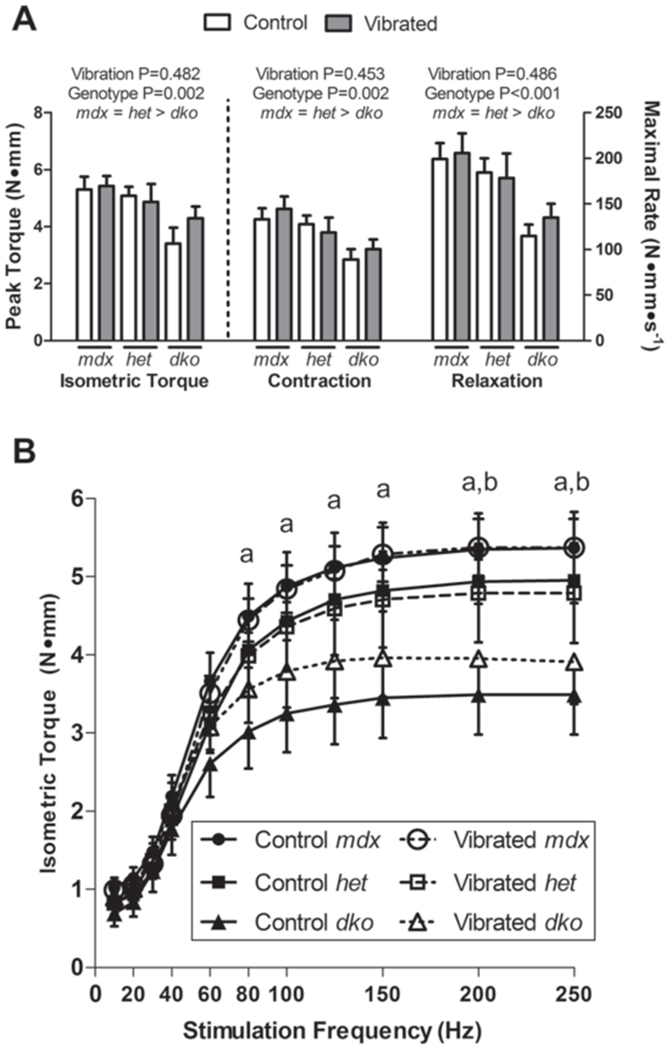Figure 3.

Seven daily bouts of low intensity vibration training on posterior crural muscle contractility in three mouse models of DMD which vary in their disease severity was investigated in Study 3. Data are mean, SE. A: Peak isometric torque and rates of contraction and relaxation were not different between Control and Vibrated mice. Dko mice consistently had lower contractility than both mdx and het mice. Main effect P-values from two-way ANOVA’s are indicated above each set of bars with post-hoc results in words immediately below the genotype main effects. B: Isometric torque production as a function of stimulation frequency indicated that vibration did not impact torque production at any frequency; however dko mice had lower torque production at frequencies above 80 Hz. Only main effects of genotype were detected, and therefore only post-hoc testing results are displayed: aSignificant difference between mdx and dko; bSignificant difference between het and dko.
